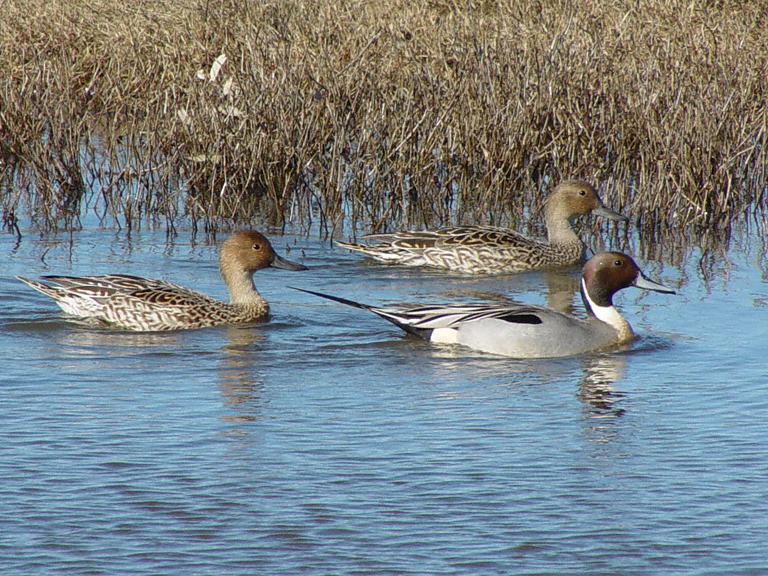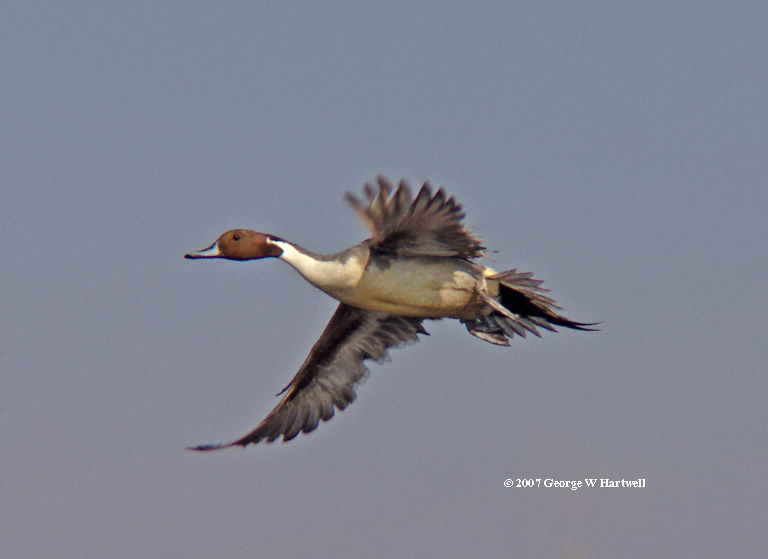Habitat
The Northern Pintail covers much North America at some point in the year and it is said that Pintails are moving to another location in North America every month of the year.
Breeding
During the breeding season, Pintails seem to be most
successful in area with open terrain, shallow waters, and a lot
of vegetation around the water source. These water sources can
include slow moving streams or rivers, swamps, bogs, marshes,
and even shallow lakes. If water sources are too shallow
however, they will not stay there because by the end of summer
the water sources can dry up completely making them unsuitable
for sustaining life. These birds do not nest near particularly
brushy or heavily wooded areas.
bogs, marshes,
and even shallow lakes. If water sources are too shallow
however, they will not stay there because by the end of summer
the water sources can dry up completely making them unsuitable
for sustaining life. These birds do not nest near particularly
brushy or heavily wooded areas.
Migrations
The migration of Pintails can cover vast areas
and can even spill over to other continents such as Asia
and occasionally South America. Most often if these
ducks migrate to Asia it is to areas in southern Russia.
The probalility of flocks migrating to Asia increases
the closer they are to the Pacific coast. Throughout
these migrations, Pintails usually settle around shallow
waters of all sorts that are sheltered from the wind.
Spring- February usually marks the
beginning of the Spring migration northward, usually to
Canada. During the spring months is also when the
probability of finding Northern Pintails in Asia
increases.

Summer- A few of the drakes will stay at the
breeding site to molt but the heavy majority will gather
in enormous numbers (10's to 100's of thousands)
hundreds of miles from their nests to molt. Some of the
most well known areas to witness this are
Bear River Migratory Bird Refuge in northern Utah
and
Klamith Basin National Wildlife Refuge in
Oregon/California.
Fall- Beginning in August, drakes take flight
with their newly grown flight feathers and head south
and travel through a majority of September. These flocks
are almost always unisexual. The females tend to to take
flight about a month later than the males and come
together after being scattered after nesting and
molting.
These migrations are simply patterns however and are
by no means set in stone. Some flocks start migrating in
September, which could be considered normal, and other
flocks wait all the way until January, making it seem
like spring migration is actually south, east, and then
finally north. The flocks are unisexual more often than not
and are usually grouped according to age as well from
late summer to winter. When December comes around,
mixing occurs and the
pair formation rituals can begin.
it seem
like spring migration is actually south, east, and then
finally north. The flocks are unisexual more often than not
and are usually grouped according to age as well from
late summer to winter. When December comes around,
mixing occurs and the
pair formation rituals can begin.